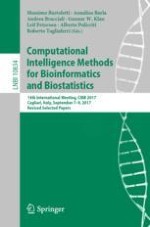2019 | OriginalPaper | Chapter
Ensembling Descendant Term Classifiers to Improve Gene - Abnormal Phenotype Predictions
Authors : Marco Notaro, Max Schubach, Marco Frasca, Marco Mesiti, Peter N. Robinson, Giorgio Valentini
Published in: Computational Intelligence Methods for Bioinformatics and Biostatistics
Publisher: Springer International Publishing
Activate our intelligent search to find suitable subject content or patents.
Select sections of text to find matching patents with Artificial Intelligence. powered by
Select sections of text to find additional relevant content using AI-assisted search. powered by
